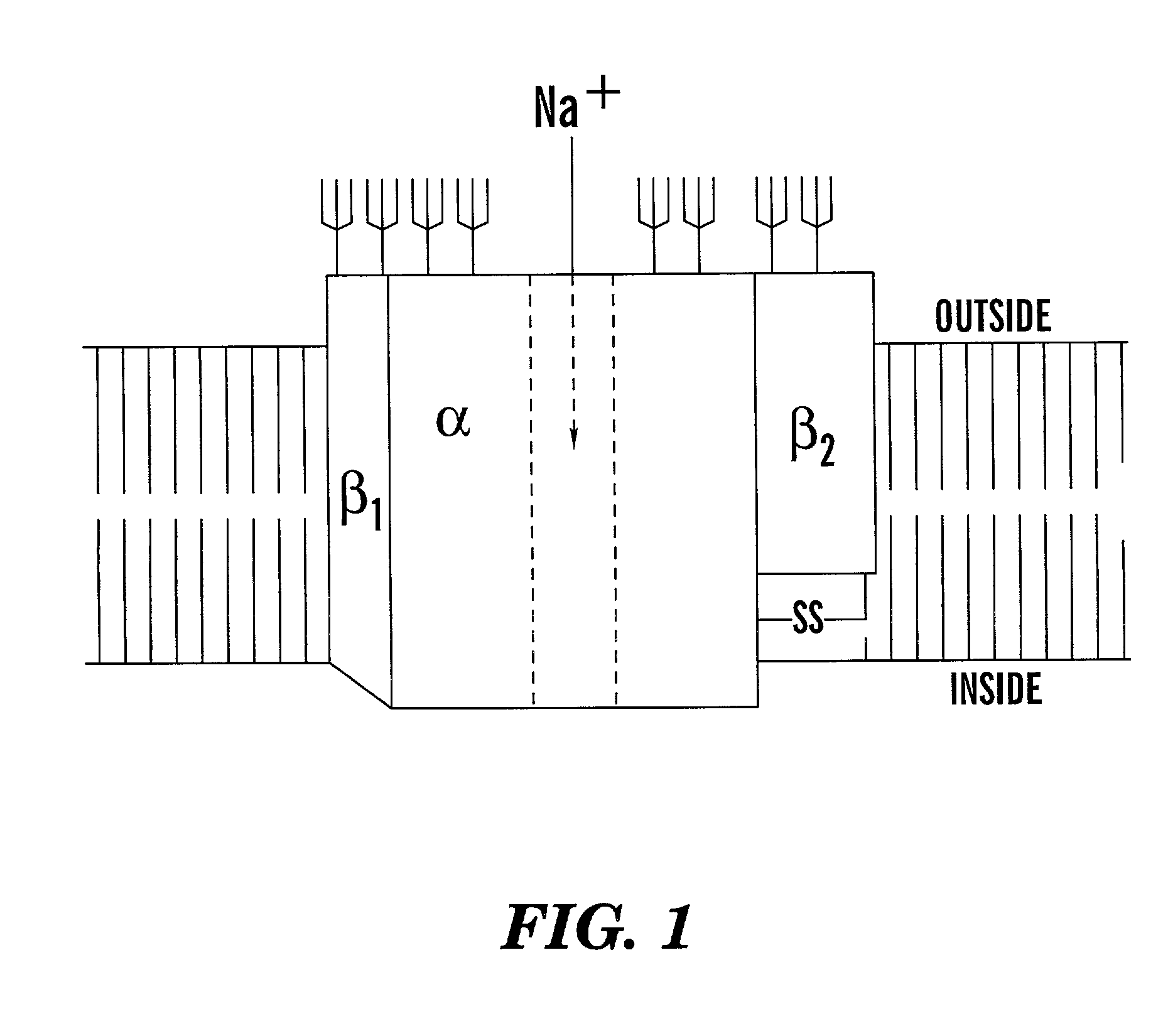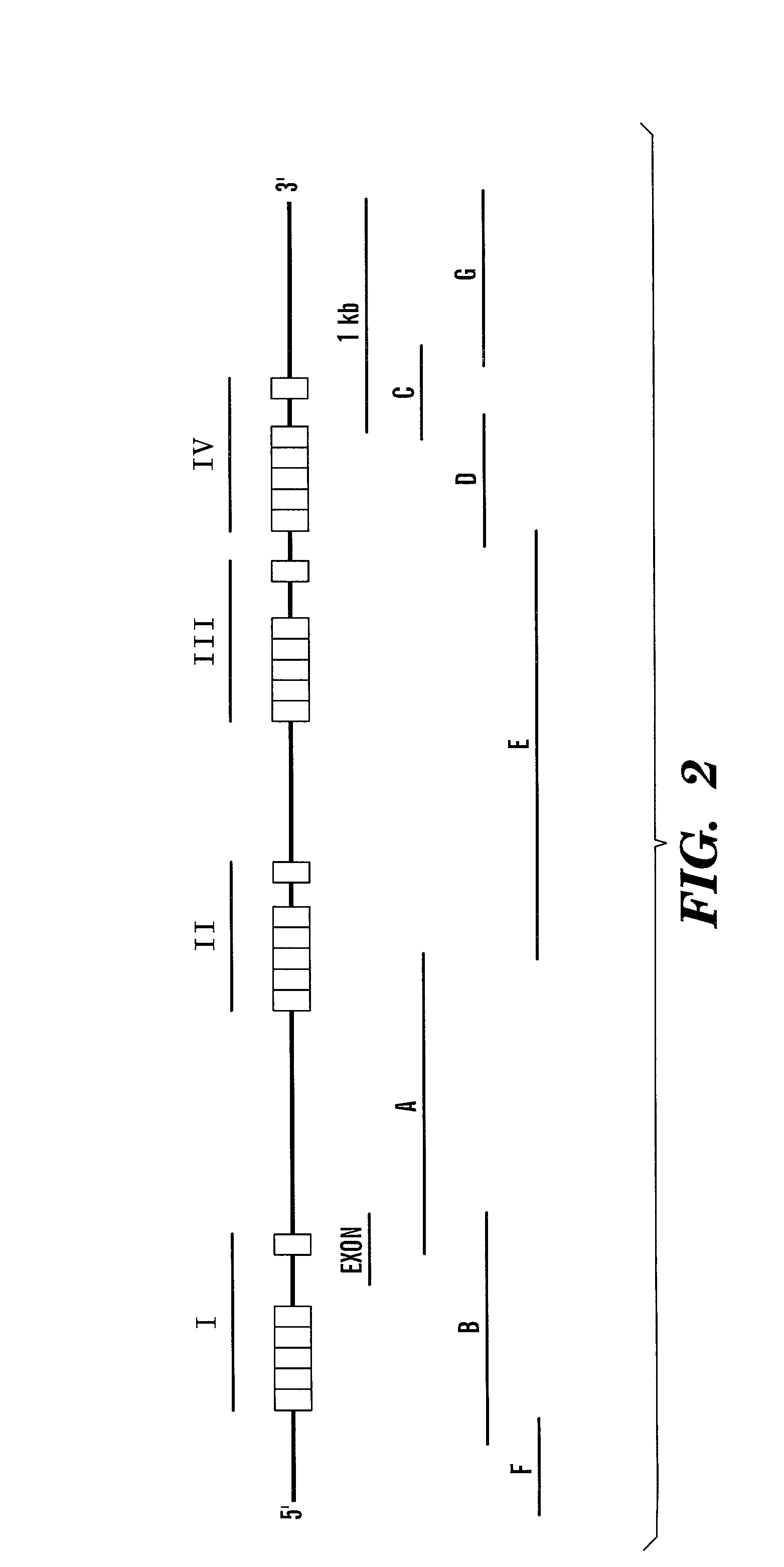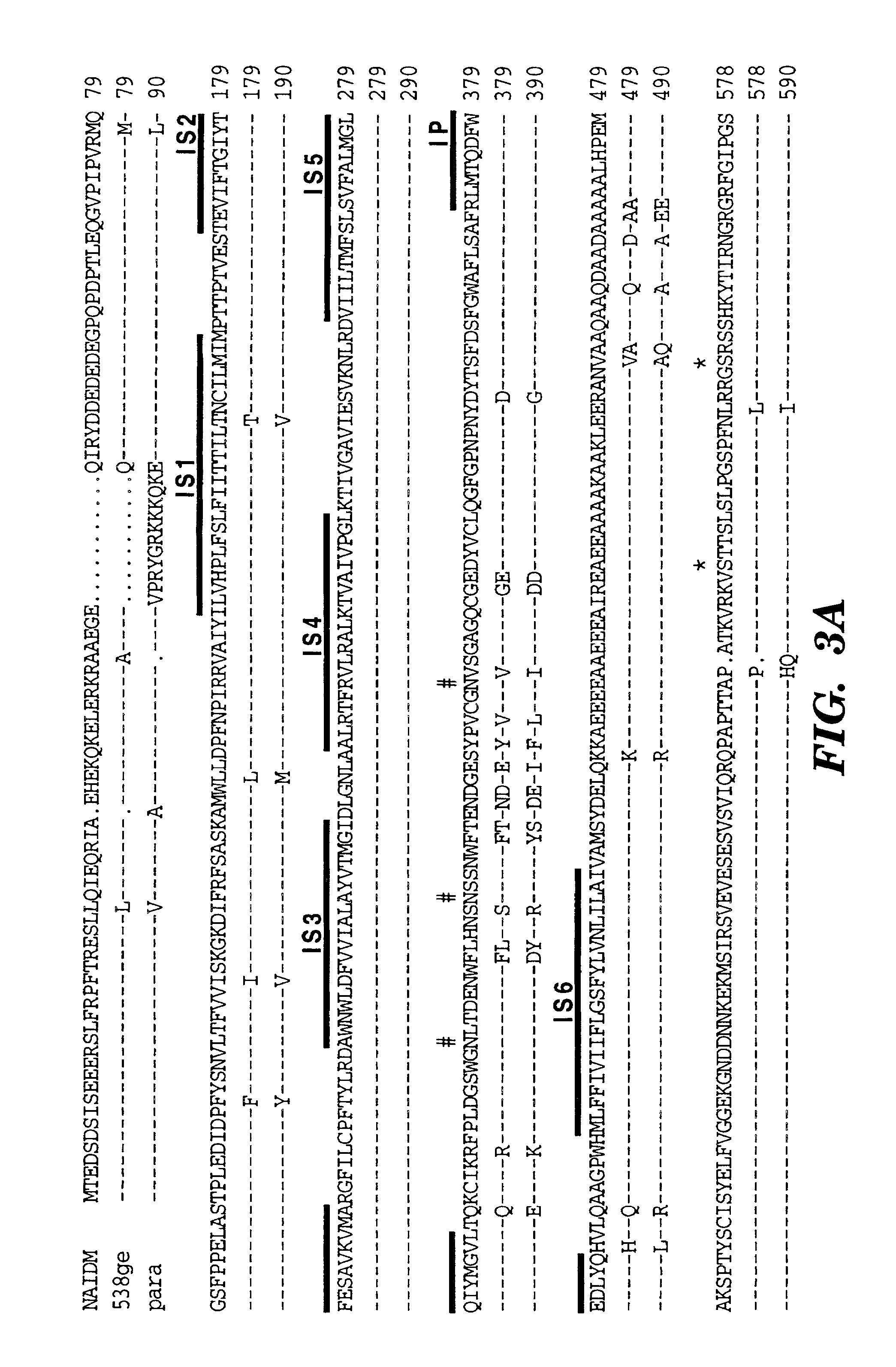Insect sodium channels from insecticide-susceptible and insecticide-resistant house flies
a technology of insecticide resistance and sodium channel, which is applied in the field of insect sodium channel from insecticide resistant and insecticide resistant house flies, can solve the problems of decreased expression of functional sodium channel
- Summary
- Abstract
- Description
- Claims
- Application Information
AI Technical Summary
Benefits of technology
Problems solved by technology
Method used
Image
Examples
example ii
Sequencing of the Insecticide Resistant Vssc of House Fly
[0083] The PCR amplification / sequencing strategy summarized in FIG. 2 was also employed to determine the sequence of Vssc1 cDNAs from-heads of the 538ge house fly strain that carries the kdr trait. The nucleotide sequence of the VSSC of the 538ge house fly is shown in SEQ ID NO:2, and the amino acid sequence is shown in SEQ ID NO:4. The amino acid sequence of 2104 residues (SEQ ID NO:4) encoded by the Vssc1.sup.538ge cDNA contained 12 amino acid differences compared to that of the VSSc1.sup.NAIDM sequence (SEQ ID NO:3) as follows: a substitution of phenylalanine for leucine at amino acid residue 1014 of SEQ ID NO:3; a substitution of isoleucine for methionine at amino acid residue 1140 of SEQ ID NO:3; a substitution of aspartic acid for glycine at amino acid residue 2023 of SEQ ID NO:3; a deletion of amino acid residues 2031-2034 of SEQ ID NO:3 (glycine-alanine-threonine-alanine); a substitution of threonine for serine at amin...
PUM
| Property | Measurement | Unit |
|---|---|---|
| molecular weight | aaaaa | aaaaa |
| resistance | aaaaa | aaaaa |
| nucleic acid | aaaaa | aaaaa |
Abstract
Description
Claims
Application Information
 Login to View More
Login to View More - R&D
- Intellectual Property
- Life Sciences
- Materials
- Tech Scout
- Unparalleled Data Quality
- Higher Quality Content
- 60% Fewer Hallucinations
Browse by: Latest US Patents, China's latest patents, Technical Efficacy Thesaurus, Application Domain, Technology Topic, Popular Technical Reports.
© 2025 PatSnap. All rights reserved.Legal|Privacy policy|Modern Slavery Act Transparency Statement|Sitemap|About US| Contact US: help@patsnap.com



